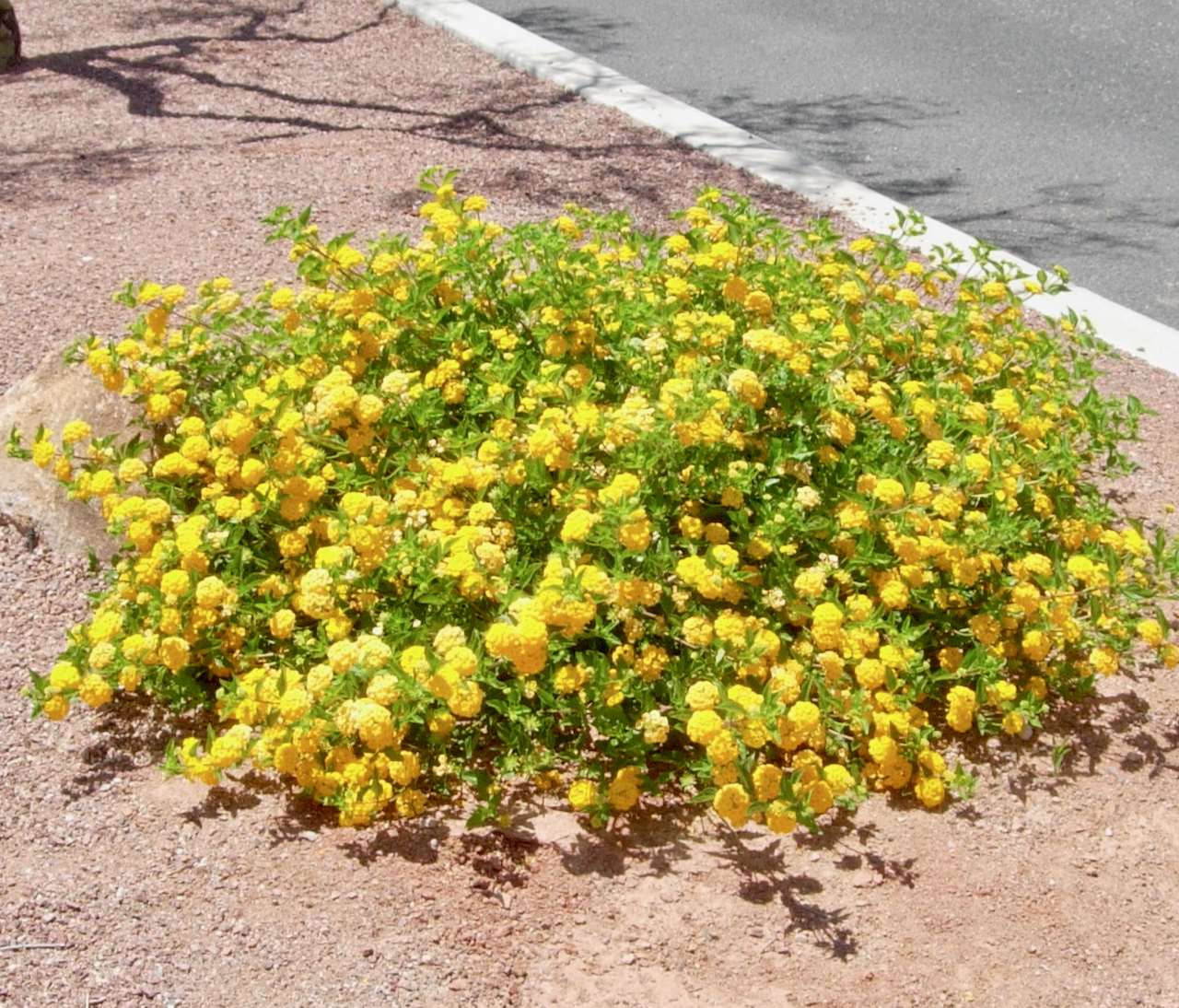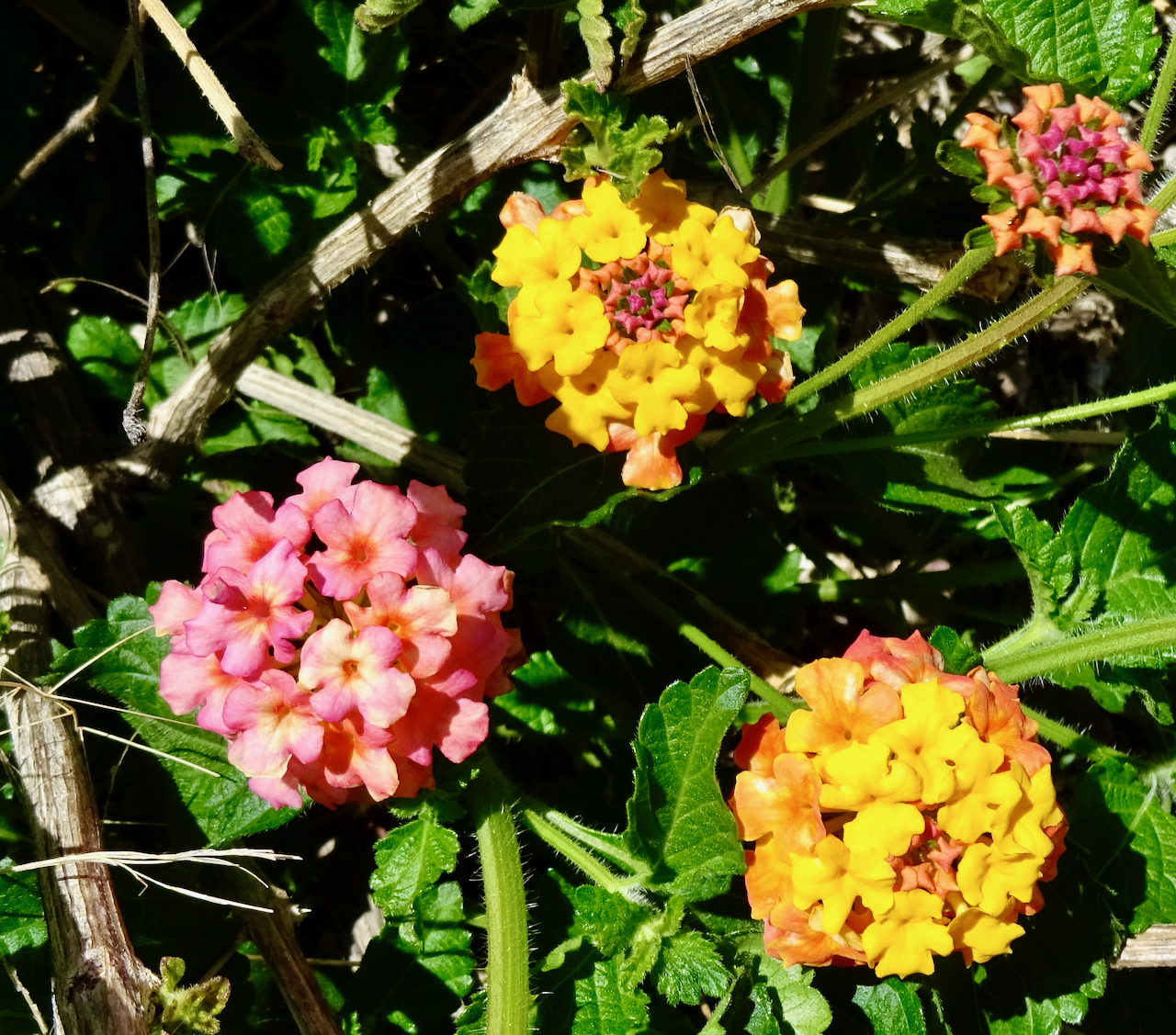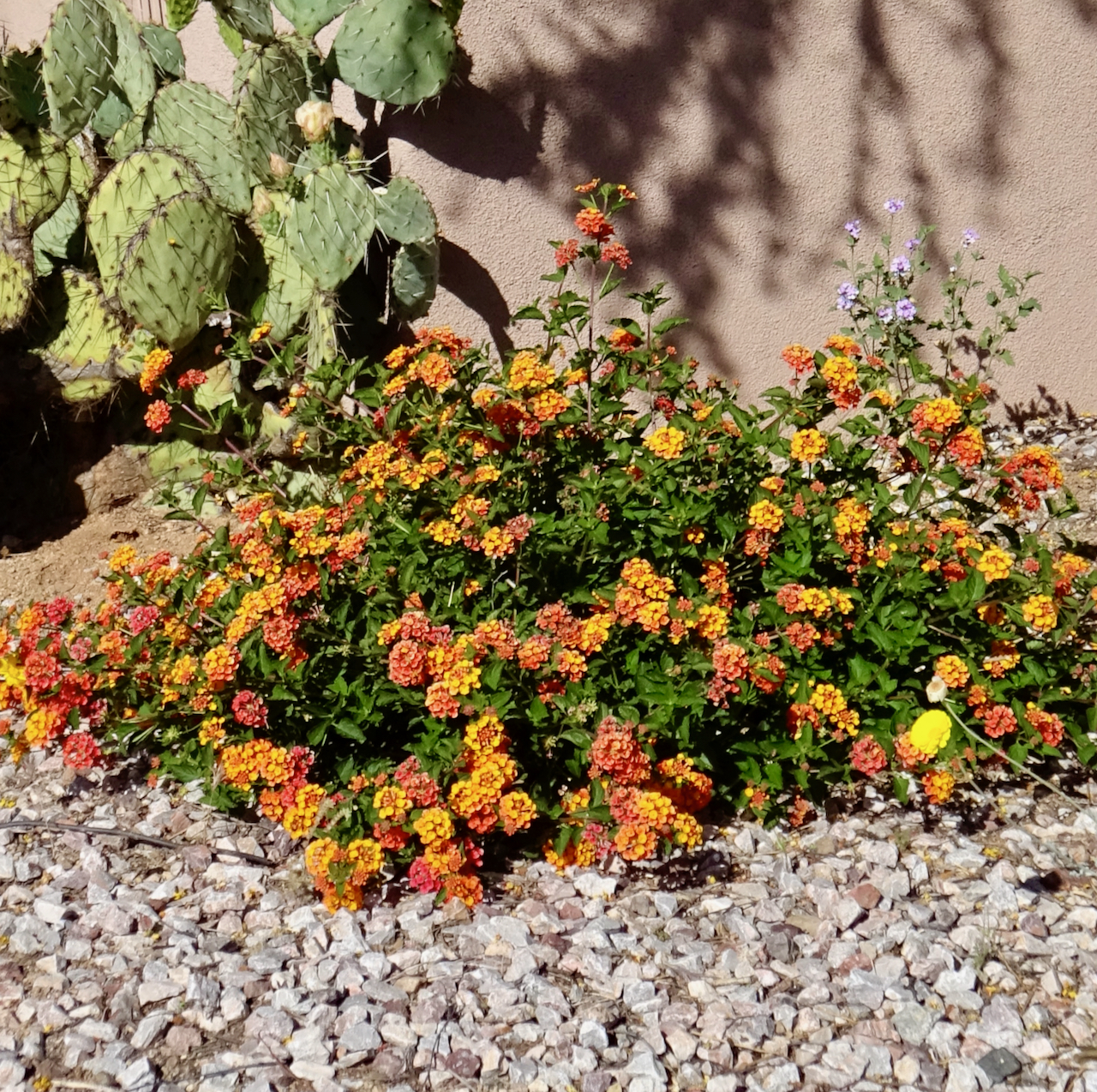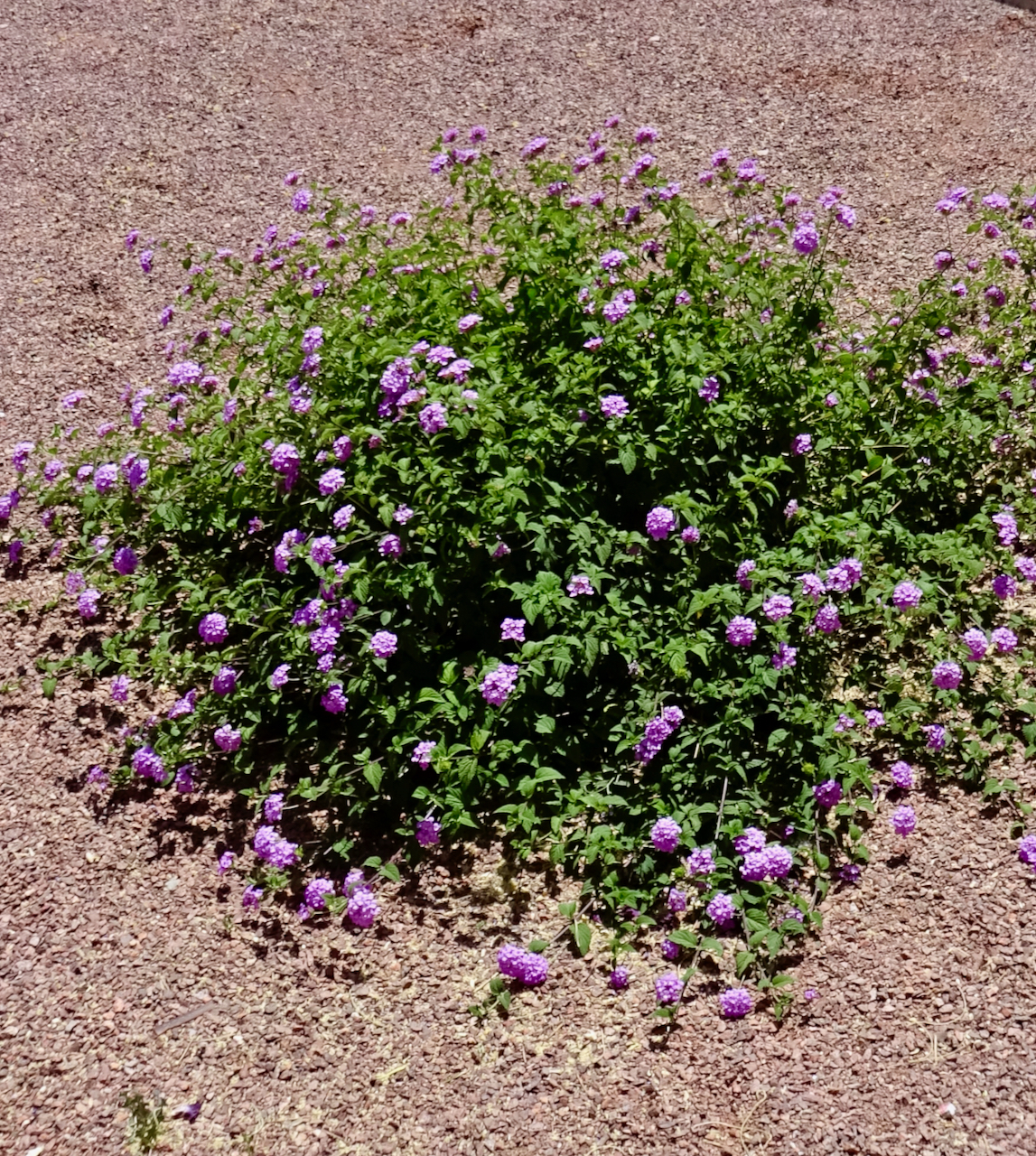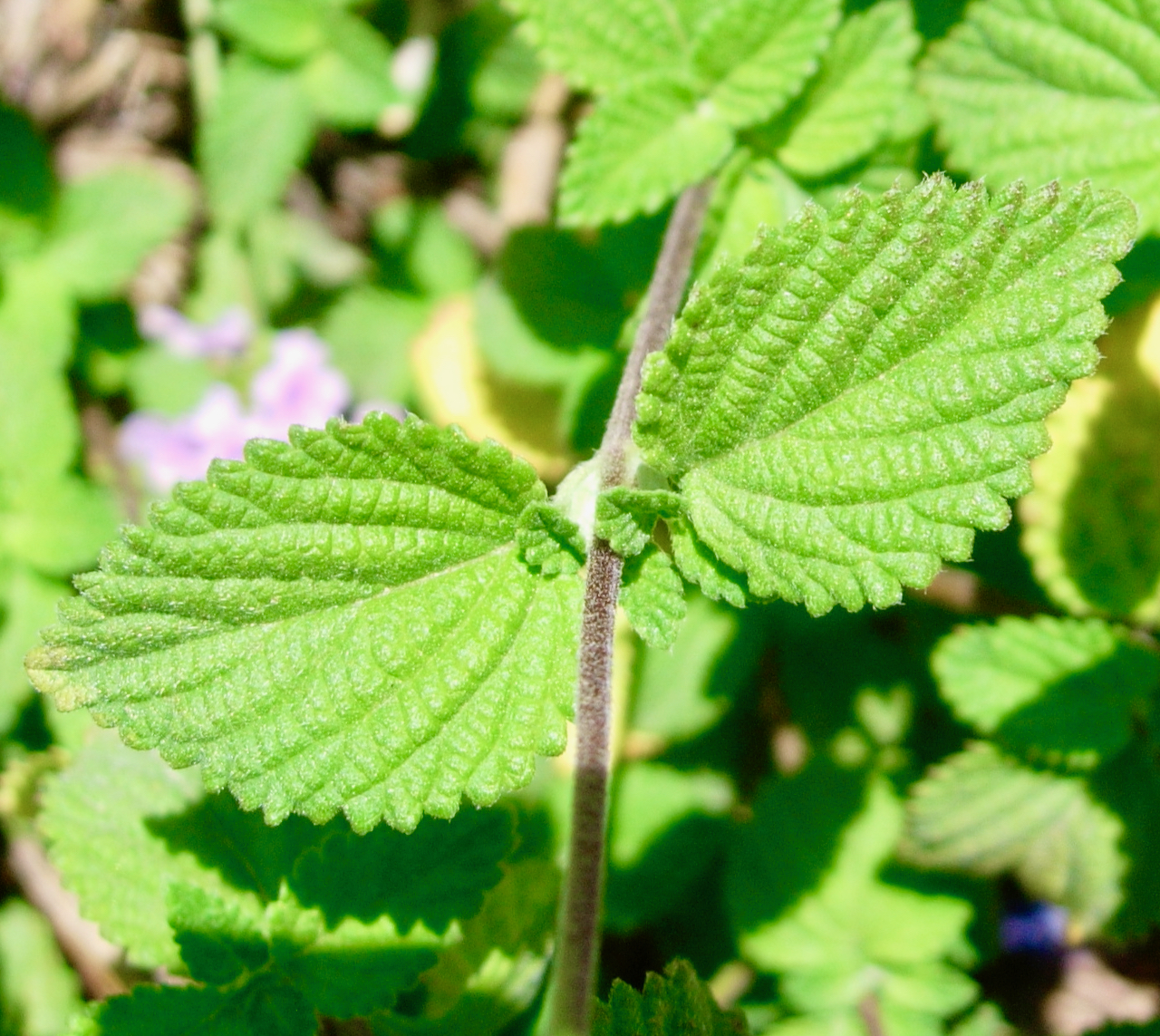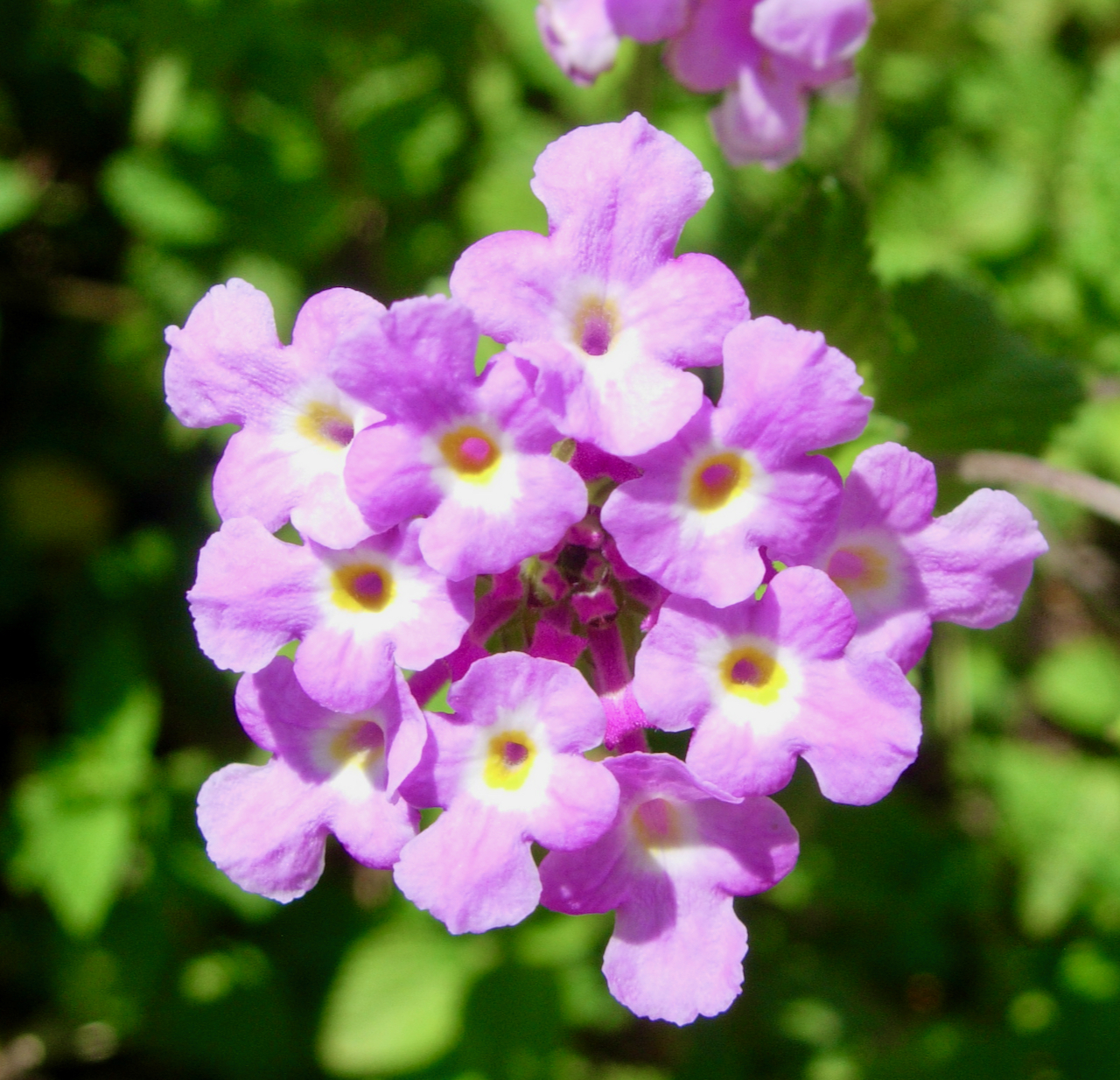Trailing lantana
Lantana montevidensis
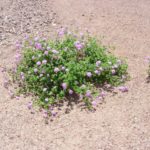
About the Plant
Trailing lantana is a common landscape plant in the Tucson area. Its low growth makes it suitable for edgings and for use as a groundcover. This native of Tropical America is grown worldwide along with its relative Lantana camara, which is considered a noxious weed in some areas (for example, see this article from Australia and this one from Invasive Plant Atlas).
Perhaps evergreen in warmer climbs, trailing lantana routinely dies to the ground in winter in the foothills surrounding Tucson. Cut off the dead parts in late winter. Flowers and leaves will appear in April and last until the first frost of late fall. This plant does best with regular watering in summer.
The flowers of trailing lantana are typically purple. Selections with white flowers or varying shades of purple are sometimes available. Hybrids with shrubby lantana (Lantana camara) are known and may have yellow, gold, or multicolor flowers. These hybrids are mostly sterile and will not produce fruit.
CAUTION: There is evidence that lantana fruit is toxic to animals, including dogs (more information on toxicity). Also, the hairs on the leaves can cause irritation in some people.
Wildlife value: attracts butterflies and bees. Birds will eat the fruit, which is the main avenue of spread.
More Information
Weekly Plant comparing lantana with Goodding verbena
Horticultural information from ASU
In books:
Perennials for the Southwest by Mary Irish, page 165
